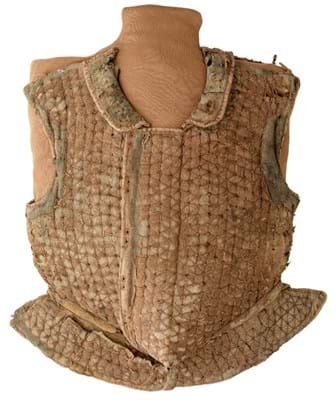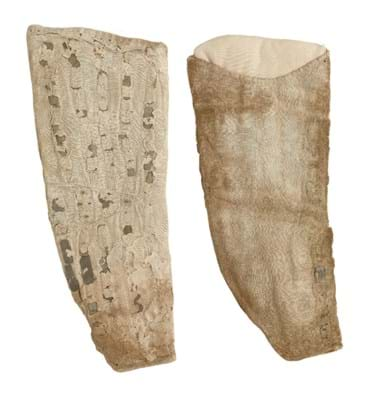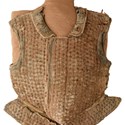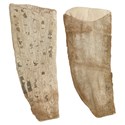On December 7 the museum in Kensington secured an English jack of plate and platesleeves, c.1580-90, at Thomas Del Mar’s Antique Arms, Armour & Militaria sale held an arrow-shot away at the auction ‘hub’ of 25 Blythe Road, West Kensington.
The jack of plate, which sold for a low-estimate £12,000, is formed of overlapping square plates of iron sewn within the inner and outer layers of a fabric doublet and would cover the upper body. The platesleeves, offered as a separate lot bought by the V&A for £4500 (estimate £3000-5000), are also made up of columns of iron plates again between the outer and inner layers. As in the jack of plate, the iron is secured by crossbow twine.
Such armour was common at one stage but is extremely fragile and few examples remain because of the deterioration of the fabric. Auctioneer Thomas Del Mar said: “It is a very rare thing - I don’t believe there’s been one on the market for the last 50 years. I’ve never seen one before at auction. They created considerable interest, and the main issue was that people felt across the board that it should not only be in a museum but stay in this country, so I’m delighted with it.”
Del Mar said although fabric armour is known across Europe, this style with the plate sewn into the fabric seems to have been found only in Britain. References to ‘jacks’ appear with particular frequency in Scottish and northern English documents of the period.
Defences of this kind ceased to be made towards the end of the 16th century. Their use did persist in the early years of the following century, however, and in 1622 some 40 examples were issued from the Armouries of the Tower of London for use in America by the Virginia Company.
Made of snipped-up bits of iron in an early example of recycling, they would have been effective against the cut and thrust of battle at the time. Some were probably recycled from the earlier type of armour known as the brigadine which was made up of leather covered in plates.
Lancashire collection
Both pieces came originally from Worden Hall in Lancashire as part of a collection formed by Sir William ffaringdon (c.1704-81) after 1765. The collection was sold by a local auctioneer in 1948. Another jack was part of the group offered at Del Mar but did not sell to the V&A.
Only 16 more or less complete jacks of plate are preserved worldwide. The largest group, eight (only five of which are complete), is held by the Royal Armouries Museum, Leeds.
While the V&A is known more as a design museum and for its textiles, Del Mar pointed out that it does have a very important collection of armour such as items from the David Martin Currie bequest (loaned from 1887-1920 and donated on his death). Del Mar knew of the museum’s interest pre-sale.









